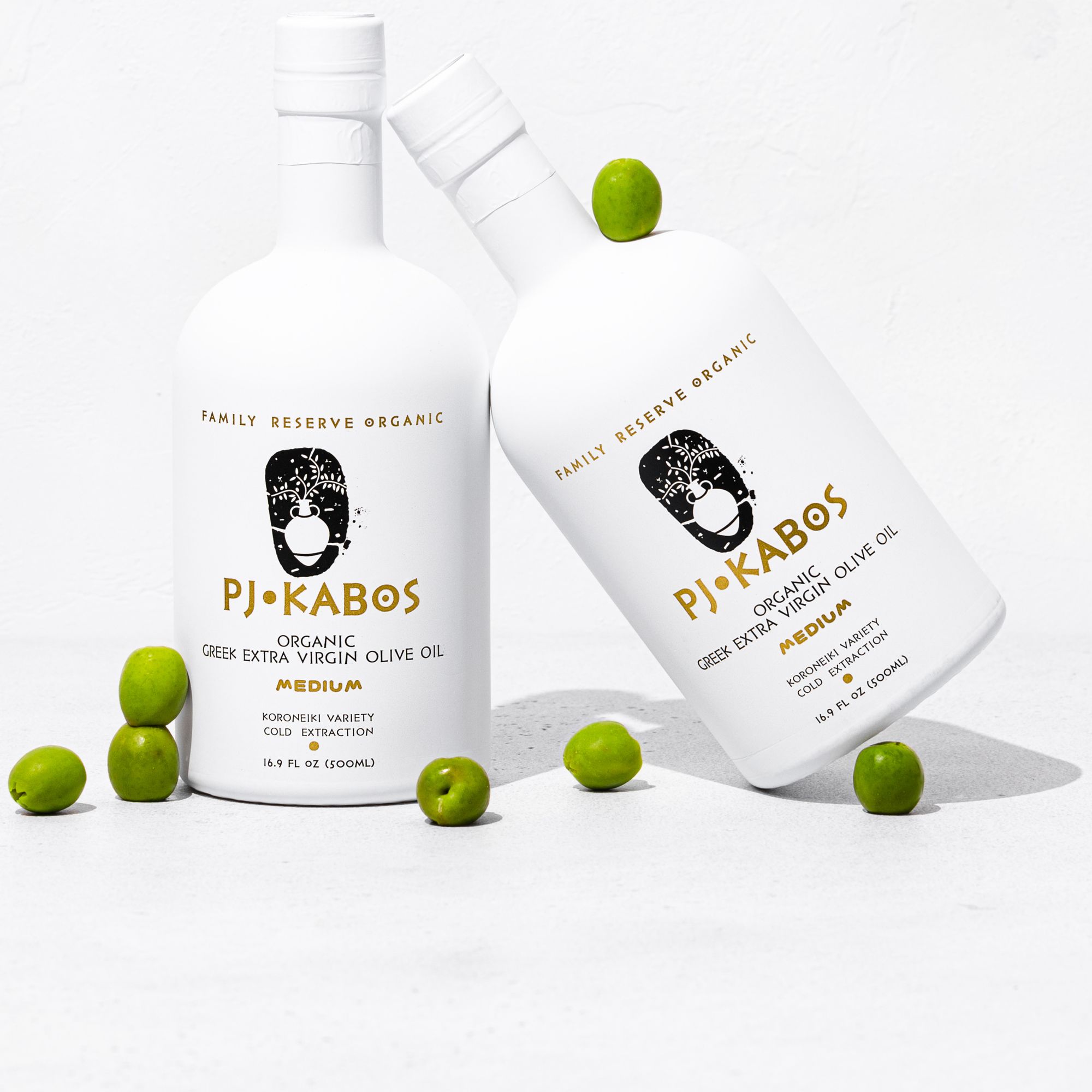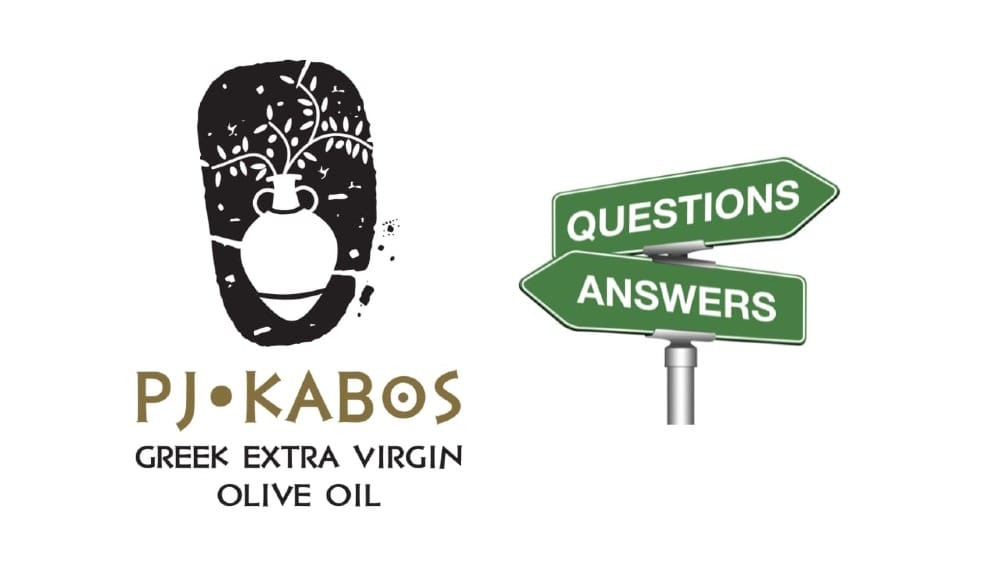Olive oil reigns supreme in the Mediterranean, adding silky, peppery goodness – as well as ample health benefits – to the dishes we love.
While less acclaimed, however, sunflower oil is one of the most common cooking oils in the world alongside vegetable oil, coconut oil, coconut oil, peanut oil, and the oh so classic canola oil.
But is it healthy? And how does it compare to olive oil? In this article, we dive into the two oils to compare the processing, the nutrient profiles, the smoke point, and more.
Olive Oil vs. Sunflower Oil: How Is It Made?
First of all, what is sunflower oil? This one is a bit complicated, so we’re going to take a closer look. Sunflower oil is made by pressing the seeds of the Helianthus annuus plant, commonly known as the sunflower.
While that’s simple enough, it goes deeper: there is more than one type of sunflower oil on the market in the US. In fact, according to the National Sunflower Association, there are four.
These sunflower seeds are bred to produce different compositions of fatty acids. They are either high in linoleic or oleic acid. Here’s a quick explanation of these fatty acids.
- Linoleic acid, AKA omega-6, is a polyunsaturated fatty acid with two double bonds in its carbon chains
- Oleic acid, also known as omega-9, is a monounsaturated fatty acid with one double bond.
- Both of these fatty acids are sources of energy for the body. They contribute to cell and tissue strength, and are liquid at room temperature.
- However, the way they react to cooking is different. That means they have different impacts on your health.
Here is the full list:
- High linoleic (68% linoleic bacid): This is the traditional type of sunflower oil made in the U.S. According to the National Sunflower Association, this is only produced in small quantities today because it has limited uses in fried foods.
- Mid-oleic (NuSun, 65% oleic acid): This is the most prevalent sunflower oil produced in the US and Canada. It has a good shelf life and is great for frying, with high stability and a neutral taste.
- High oleic (82% oleic acid): While some companies still produce high oleic acid sunflower oil, this is less common than mid-oleic acid. It is characterized by its higher stability and neutral taste.
- High stearic/high oleic (Nutrisun, 72% oleic acid, 18% stearic acid): This oil is solid at room temperature. According to Healthline, this type of sunflower oil is not meant to be used in home cooking. Rather, it is used in packaged foods like chocolate and ice cream, and for industrial frying.
How is sunflower oil made?
The sunflower oil you’ll see at the supermarket is made in two main steps: pressing the seeds, then refining the oil.
Refining eliminates any flavor impurities, making the oil neutral in taste, and streamlining the smell and appearance. As a rule of thumb, the more refined an oil is, the less nutrients it contains.
How is olive oil made?
There are also four main types of olive oils available on the market. Here’s a brief introduction to how each type is produced. (Read more about the different types of olive oil here.)
- Extra virgin olive oil (EVOO) is made solely by mechanical means. The fruit is ground to a paste and the oil is separated from the solids and water, usually by centrifuge. Finally, the oil is filtered or racked to remove any remaining water or particles. EVOO is cold-pressed—more correctly "cold-extracted"—never exposed to chemicals or high heat at any point. EVOO meets the chemical and sensory standards for the highest grade of virgin olive oil.
- Virgin olive oil is harder to come by than extra virgin olive oil, but it’s made by the same method. The difference is that virgin olive oil is allowed to have some minor flavor defects – possibly not enough to notice especially in cooking – whereas EVOO is not.
- Regular olive oil (or pure olive oil) is more processed than EVOO and virgin olive oil. This oil is made from a combination of refined olive oil and 15%-25% virgin olive oil. Refined olive oil is made from the lowest grade of virgin olive oil treated with chemicals and heat to remove any flavor defects and produce a neutral tasting oil.
- Light or extra light olive oil is a combination of refined olive oil and 5%-10% virgin olive oil. As with regular olive oil, the refined oil is treated with some heat and chemicals to remove flavor defects. While the name sounds like a diet alternative, that’s not the case! It just means that the flavor is light—the calories are the same.
As you can see, sunflower oil is more processed than virgin and extra virgin olive oil, which are produced solely by mechanical means without high heat or chemicals.
Nutritional Breakdown of Sunflower Oil vs. Olive Oil
Here’s how olive oil compares to sunflower oil. As you will see, the labels look rather similar. Both oils are higher in healthy monounsaturated and polyunsaturated fats and lower in inflammatory saturated fats.
Sunflower Oil
According to the USDA, a tablespoon of mid-oleic sunflower oil, which is the most common sunflower oil on the market, contains the following:
- Calories: 124
- Total fat: 14 g
- Saturated fat: 1.22 g
- Polyunsaturated fat: 3.94 g
- Monounsaturated fat: 7.8 g
- Cholesterol: 0 mg
- Total carbohydrate: 0 mg
- Protein: 0 mg
Olive Oil Nutrition
In general, one tablespoon of olive oil contains the following, according to the USDA:
- Calories: 119
- Total fat: 13.5 g
- Saturated fat: 1.9 g
- Polyunsaturated fat: 1.4 g
- Monounsaturated fat: 10 g
- Cholesterol: 0 mg
- Total carbohydrate: 0 mg
- Protein: 0mg
However, there’s more to it than what’s on the label. Olive oil – EVOO in particular – contains an impressive amount of polyphenols.
Polyphenols are powerful antioxidants that protect the body from free radicals. Olive oil also contains vitamin E, squalene, chlorophyll, and carotenoids like lutein.
Sunflower oil also contains a large dose of vitamin E, which protects cells from age-related damage. But it lacks the potent antioxidants that are found in olive oil. In fact, one tablespoon of sunflower oil contains 28% of a person’s daily recommended intake.
Which is Healthiest: Olive Oil or Sunflower Oil?
While sunflower oil does contain healthy fats, it is refined. That means it has fewer bioactive compounds than olive oil.
As cited in Time, sunflower oil does pack a good amount of vitamin E. However, “sunflower oil contains a lot of omega-6 fatty acids. The body needs them, but omega-6s are thought to be pro-inflammatory, while omega-3s are anti-inflammatory. Consuming too many omega-6s without balancing with omega 3s, could lead to an excess inflammation in the body, so moderation is key.”
Additionally, sunflower oil may release some toxic compounds when heated. According to Healthline, “one study found that sunflower oil released the highest amount of aldehydes into cooking fumes, compared with other plant-based oils in three types of frying techniques.” As sunflower oil is often used in frying and other high-heat cooking, this is concerning.
Olive oil, on the other hand, is packed with science-backed health benefits. Here’s a run-down of a few of the most impressive.
- Olive oil is anti-inflammatory. The oleic acid also has powerful anti-inflammatory properties. These are likely a contributing factor to the anticancer and heart health benefits of EVOO.
- Olive oil is heart-healthy. Oleic acid also has been shown to reduce blood lipids, including cholesterol levels, LDL, and triglycerides, to the joy of the American Heart Association. Some research shows that it helps lower blood pressure.
What is the Difference in Taste?
Sunflower Oil Flavor
Don’t expect sunflower oil to have the nutty taste of a sunflower seed. Sunflower oil is treated with chemicals and heated, which prolongs its shelf life. However, this process also removes nutrients and flavor, creating a far more neutral oil.
Olive Oil Flavor
The flavor of olive oils really runs the gambit. EVOOs made with fresh, green, unripe olives at the beginning of the season can have an intense, peppery flavor that may even make you cough. An olive oil made with ripe olives tends to be smoother and more buttery.
As regular and light olive oils contain both virgin and refined oils, their flavor is more neutral.
Bottom Line — Sunflower Oil vs. Olive Oil
While the nutritional labels of sunflower oil and olive oil look similar, olive oil has far more healthy oil benefits, particularly when it comes to keeping the risk of heart disease at bay by keeping LDL cholesterol nice and low. EVOO also has a delicious flavor that will add pizzazz to your recipes whether you're sautéing, stir-frying, or just making a salad dressing. However, those looking for a more neutral flavor might opt for regular or extra light olive oil.
Sunflower oil does contain a healthy dose of vitamin E, and is a more affordable and often versatile alternative. However, with the concerns about sunflower oil releasing toxic compounds when heated, we would not recommend using it for frying.
Sources
https://www.sunflowernsa.com/oil
https://www.healthline.com/nutrition
https://time.com/5342337/best-worst-cooking-oils
https://www.healthline.com/nutrition/is-sunflower
https://www.ncbi.nlm.nih.gov/pubmed
https://pubmed.ncbi.nlm.nih.gov/
https://www.sciencedaily.com/releases
https://www.nature.com/articles
https://www.ncbi.nlm.nih.gov/pmc
https://www.ncbi.nlm.nih.gov/pmc/articles/
https://www.aboutoliveoil.org/olive-oil-smoke
Product placement
PJ KABOS 'Family Reserve Organic - Medium'
High Phenolic and 2022 Gold-Award Winner.
Declared as 'One of the World's Best Olive Oils'.
Click here to shop.





